

“Show me the Linux!” you say? Embedded Linux-based technology is closer than you think.
People keep asking, “All this talk about Embedded Linux taking off like a rocket sounds great, but are any real companies using Embedded Linux in real products? And, if so, when do these Embedded Linux-based products start hitting the market?”
The answer is “You bet they're designing Embedded Linux into real products! Lots of 'em!” As for when these products start shipping to customers, some are already being delivered in large quantities, and many more are in varying stages of development. Bear in mind, the gestation cycle of most new product-development projects is roughly nine to twelve months, whereas Embedded Linux itself has only just begun to see widespread interest in the past twelve months. If you do the math based on those two assumptions, you'll quickly realize that the rollout of Embedded Linux-based products ought to be starting right about now and is expected to pick up momentum toward the end of this year.
Although Linux Journal and others have covered a number of consumer-oriented, Embedded Linux-based devices through news announcements, preview stories and product reviews, many design projects are, for obvious reasons, conducted beneath a cloak of secrecy. As you can imagine, suppliers of Embedded Linux are fond of saying, “We really wish we could tell you about some of the exciting products we've been designed into, but we're under nondisclosures that prevent us from talking about them.”
Here, then, is a brief rundown on many of the Embedded Linux-based, consumer-oriented devices that have been disclosed publicly. Bear in mind that the list below represents merely the tip of the Embedded Linux iceberg, as it were.
Samsung Yopy PDA--The Yopy offers a browser, MP3 player and CompactFlash in a compact PDA-sized package. The device has a 3.9" backlit color LCD screen, uses an ARM processor and provides both RS232 serial and USB expansion interfaces. All “standard” PDA applications are included. See details at www.linuxdevices.com/news/NS6600527506.html.
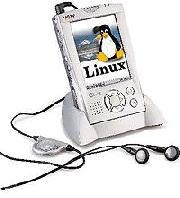
Figure 1. Samsung Yopy PDA
Agenda VR3 PDA--The VR3 is a full-function PDA with a 160x240 pixel (2.25"x3.25" viewable area) backlit LCD. It is based on a 66MHz 32-bit NEC VR4181 processor, and it has 8MB of system RAM and up to 8MB of built-in flash storage. The built-in flash memory prevents data loss due to a discharged battery condition. The device has a standard RS232 serial port plus a special high-speed serial port, along with an IrDA interface. Its operating system is Linux-VR. See details at www.linuxdevices.com/articles/AT4992223978.html.
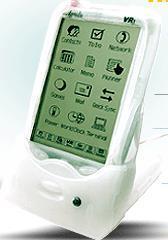
Figure 2. Agenda VR3 PDA
Compaq iPAQ PDA--Though not natively equipped with Embedded Linux, multiple projects are underway to develop Linux implementations for the iPAQ, including one from the Compaq-sponsored handhelds.org site. The iPAQ has a 240x320 pixel backlit color LCD screen and is powered by a 206MHz Intel StrongArm processor with 32MB of RAM and 16MB of flash memory. External interfacing and expansion are via IrDA, serial (sync/async), USB and PCMCIA. See details at www.handhelds.org/Compaq/iPAQH3600/iPAQ_H3600.html.
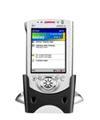
Figure 3. Compaq iPAQ PDA
Aplio/PRO Internet Phone--Aplio's Internet phone is a compact speakerphone-like appliance that contains a tiny embedded Linux computer running on an Aplio/TRIO system-on-chip processor. Internal memory consists of 4MB of RAM plus a 2MB flash disk, and the Internet connection is made via either a built-in modem or Ethernet (hub) function depending on model. The operating system is derived from uClinux. See details at www.linuxdevices.com/articles/AT9173372049.html and in “VoIP and Embedded Linux”(LJ, September 2000)
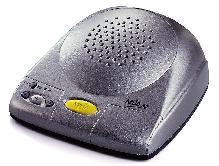
Figure 4. Aplio/PRO
Ericsson Cordless Screen Phone--The device is basically a wireless webpad with a built-in telephone and Bluetooth wireless technology for in-home use. It can surf the Web, check e-mail, send voice clips and make phone calls. The embedded computer is based on a National Geode CPU running a Red Hat supplied Linux operating system. The GUI framework is derived from Trolltech's Qt/Embedded GUI toolkit, and the browser is from Opera. See details at www.linuxdevices.com/articles/AT4268573160.html.
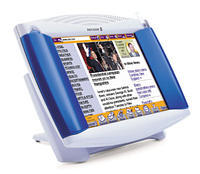
Figure 5. Ericsson Cordless Screen Phone
SK Telecom IMT2000 WebPhone--This combination cell phone and PDA has a 4" LCD screen and a built-in video camera. It looks like a PDA but includes a CDMA cell-phone module inside its case. Based on a StrongARM SA1110 206MHz CPU with 32MB of RAM, plus up to 32MB internal flash memory, the operating system software is PalmPalm's Tynux embedded Linux with Qt/Embedded for GUI support plus Opera's browser. See details at www.linuxdevices.com/articles/AT3334419107.html.
Nokia Media Terminal Set-Top Box--This device adds a broad range of Internet-based services to your normal TV set. Among the services available are digital audio/video, digital TV, video-on-demand, cached TV programs, web access, e-mail and chatting, games/gaming and many web-based software applications. The Media Terminal's internal software is based on Linux, the Mozilla open-source browser, X Window System, plus a unique user-interface technology called “Nokia Navi bars”. The embedded computer is a 366MHz Intel Celeron CPU with the Intel 810 chipset, plus 32MB SDRAM and a minimum 20GB hard disk. See details at www.linuxdevices.com/articles/AT4370516520.html.
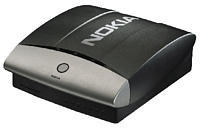
Figure 6. Nokia Media Terminal
Indrema Set-Top Gaming System--The Indrema Entertainment System (IES) is a set-top device that converts a TV into a high-end gaming system. The device is packaged in a sleek enclosure with the look and feel of a top-of-the-line VCR. It offers a choice of dialup or broadband Internet access (it has a built-in 10/100MB Ethernet controller) and comes with a game controller. The embedded computer is based on a high-end “X86” processor, plus 64MB RAM and up to a 50GB hard disk. High-speed graphics are generated by means of an upgradeable plug-in module, which initially uses an an NVIDIA GPU. The embedded operating system is DV Linux, an open-source Linux port targeted to gaming systems. See details at www.linuxdevices.com/articles/AT2772260294.html.
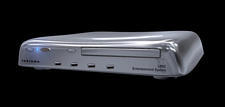
Figure 7. Indrem Set-Top Gaming System
TiVO--The TiVO “personal video recorder” represents what may well be the most well-known Embedded Linux system in existence. It also represents one of the first consumer appliances to make use of Embedded Linux. The device is based on a 54MHz PowerPC 403GCX processor with 16MB of RAM, plus a large capacity hard disk for up to 30 hours of TV program storage. Surprisingly, video is not generated in a computer-like manner but is instead based on a graphics rendering chip. Hence, the device contains a home-grown port of Embedded Linux but neither uses nor requires either a windowing system or GUI framework. See details at www.linuxdevices.com/news/NS8858229837.html.
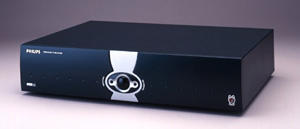
Figure 8. TiVo
FrontPath ProGear Wireless Webpad--A wireless Linux-based portable information appliance targeted to vertical market segments. The device supports various rich media formats, includes a 10.4" TFT display and obtains user input from either a virtual keyboard or handwriting recognition on its touchscreen. See details at www.linuxdevices.com/articles/AT5771747599.html.
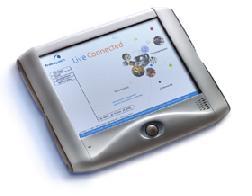
Figure 9. FrontPath ProGear Wireless Webpad
Screen Media FreePad--An easy-to-use, full-featured webpad that provides a complete set of communications and computing functions including web browsing, e-mail, telephone and answering machine functions, PDA functions and Smartcard terminal functions. The device has a large (10.4") LCD screen, touch input, built-in DECT wireless technology and provides a USB interface for external (wired) expansion. The processor is a 166 MHz MediaGX with 32MB internal RAM plus a 16MB internal flash disk. The embedded operating system is Linux, the windowing system is Nano-X from the Microwindows project and the browser is from Opera. See details at www.linuxdevices.com/articles/AT2655123453.html.

Figure 10. Screen Media FreePad
Kerbango Internet Radio--Connected to the Internet via a phone line, Ethernet or a USB-connected networking interface, Kerbango Internet Radio's internal embedded computer is based on an 80MMHz Motorola PowerPC system-on-chip processor along with 8MB of RAM and 8MB of flash storage memory. The Embedded Linux operating system is based on MontaVista Hard Hat Linux with the addition of the unique Kerbango Audio Operating System (KAOS), which provides easy-to-use features for user interface, network setup, etc. In addition to “receiving” radio stations via the Internet connection, the device includes a conventional FM radio receiver and built-in FM antenna. See details at music.gamespot.com/features/kerbango.

Figure 11. Kerbango Internet Radio
Diamond Rio Audio Receiver--This home audio receiver, which won ZDNet's first-ever “Tech Trendsetter” award, enables consumers to stream MP3 music from a PC to any room in the house, giving consumers access to MP3 music via their living room stereo where they were previously limited to portable digital audio players. Its embedded computer is based on a Cirrus Maverick system-on-chip processor running Embedded Linux. See details at www.linuxdevices.com/news/NS7845657816.html.
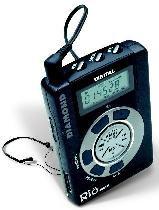
Figure 12. Diamond Rio Audio Receiver
PhatNoise PhatBox Car MP3 System--The PhatBox car audio system, which won “best overall product” at the Third Annual MP3 Summit, gives consumers the capability to take MP3 music files from their PC and listen to them in the sound system of their car. Its embedded computer is based on a 74MHz Cirrus Logic EP7212 system-on-chip processor, running Embedded Linux. See details at www.linuxdevices.com/news/NS7845657816.html.
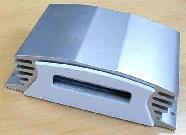
Figure 13. PhatNoise PhatBox Car MP3 System
empeg Car MP3 System--The empeg car (now in its second revision) is an in-dash digital music player with a capacity of up to 600 hours of high-quality music. Connected to a PC to receive downloaded MP3 files via USB, Ethernet, or a serial port, and can store over 600 hours of music on a pair of internal laptop-style hard drives. Inside, there's a 220MHz Intel StrongARM system-on-chip processor, 12MB RAM, and 1MB flash for bootstrap. See details at www.linuxdevices.com/articles/AT5630105143.html.

Figure 14. empeg Car MP3 System
Adomo Home Information Appliance--The AdomoWing is part of an Adomo home information system product line, comprised of distributed devices plus a server/gateway device. The AdomoWing is basically a thin-client computer system built on a 90MHz Motorola Coldfire system-on-chip processor, a VGA video controller, several programmable status LEDs, connections for infrared keyboard/mouse, PS/2 mouse, microphone, speaker and a wireless LAN interface. It runs a variant of uClinux along with Tiny-X (XF86 based). See details at www.linuxdevices.com/articles/AT5077748575.html.
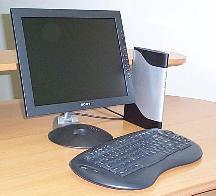
Figure 15. And More to Come
With new Embedded Linux-based devices being unveiled continually, LinuxDevices.com will maintain a continuously updated on-line “Linux-based Devices Quick Reference Guide”. Check out the latest up-to-the-minute roundup at: www.linuxdevices.com/articles/AT4936596231.html.